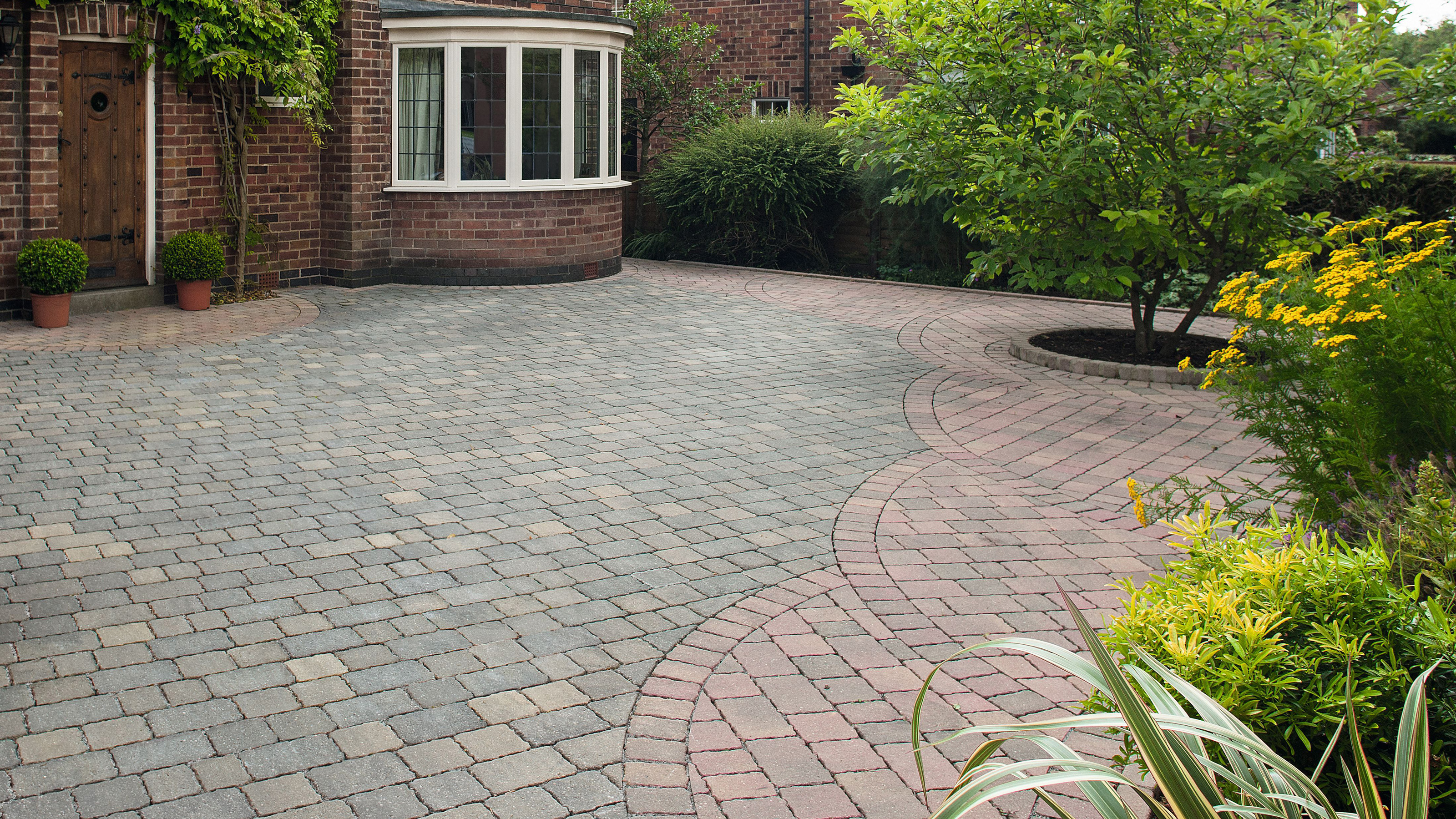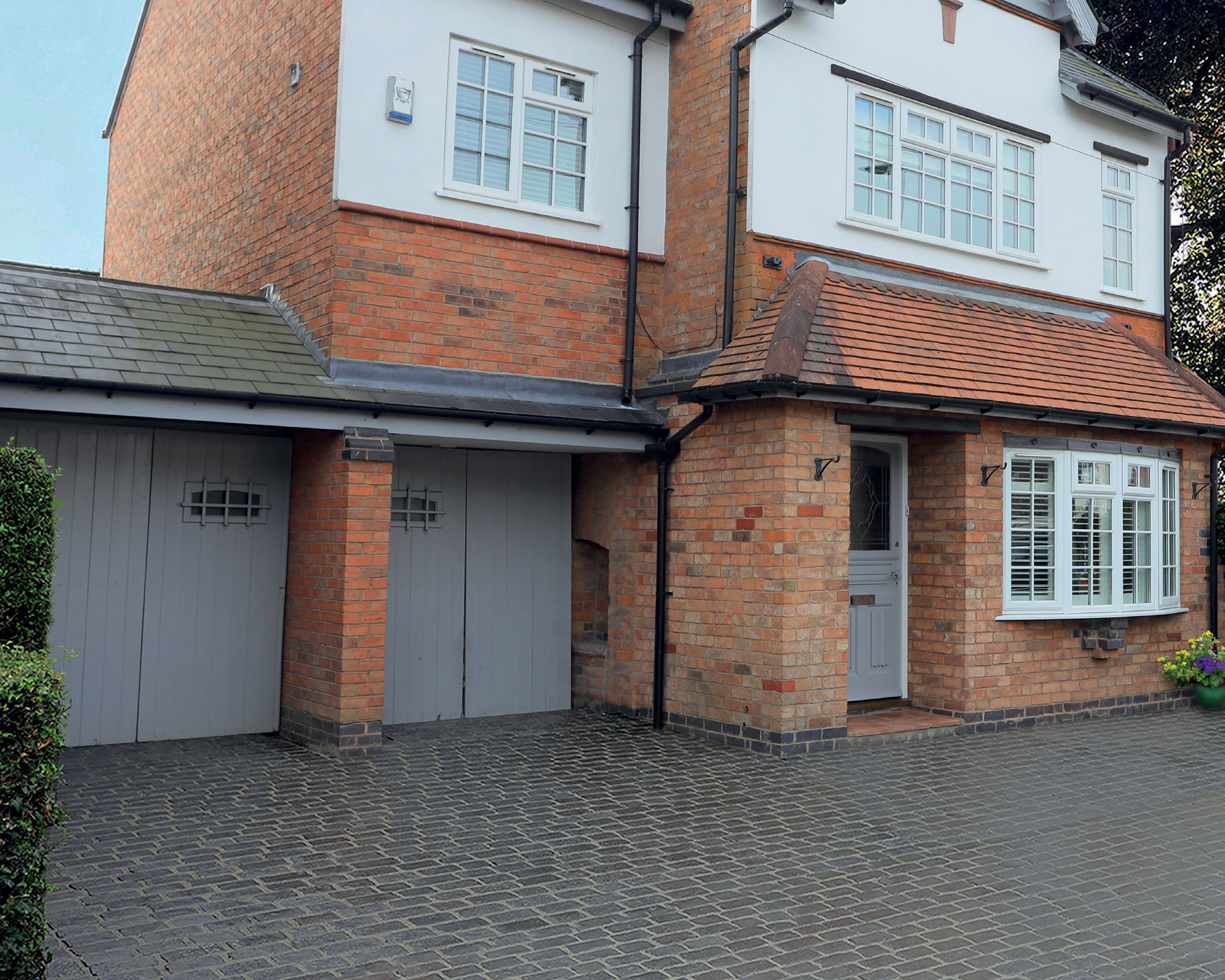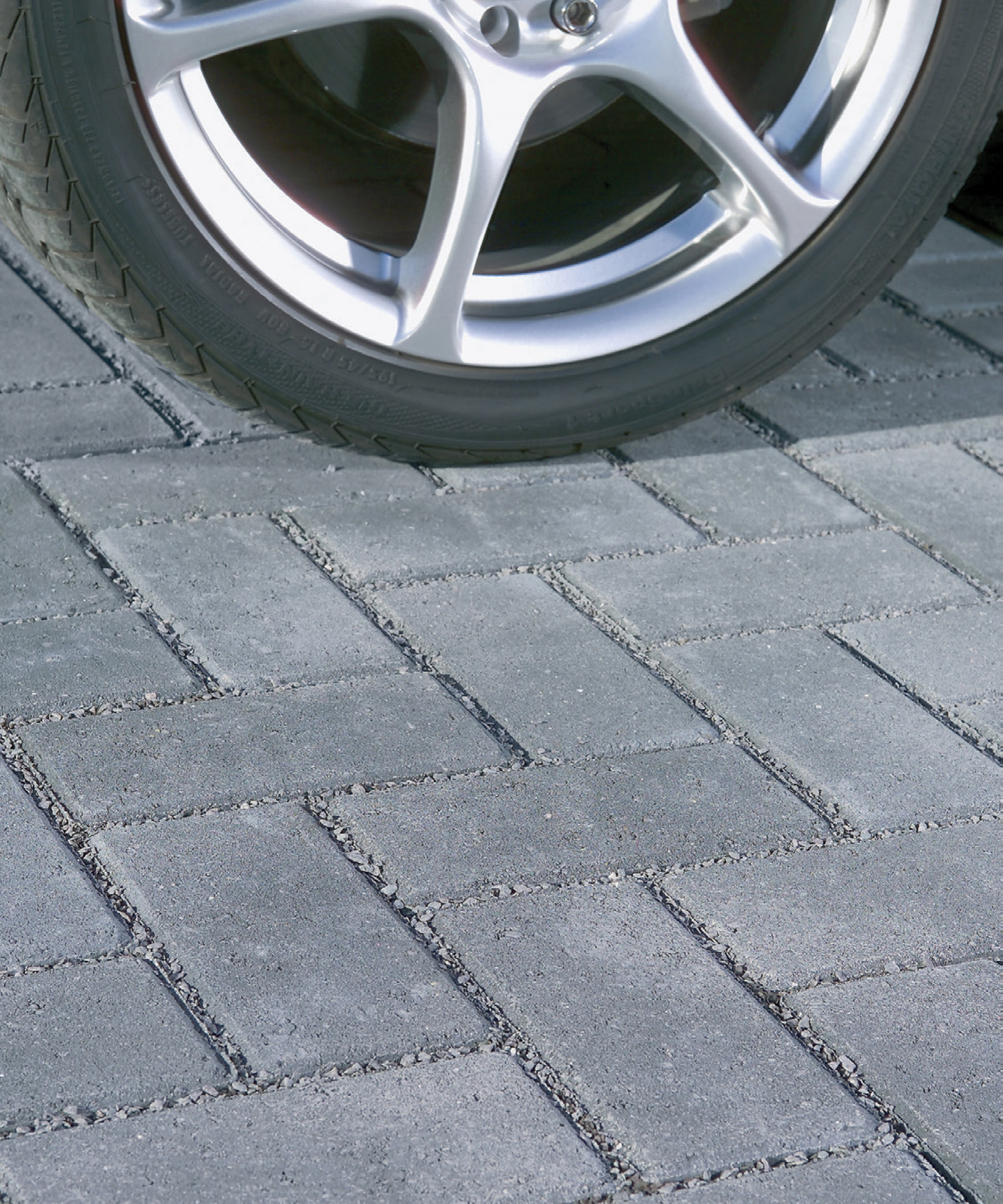What is permeable paving? Find out all you need to know with our expert advice
If you're wondering 'what is permeable paving' and why you should choose it, our expert guide has all the answers to your questions


If you're asking yourself 'what is permeable paving', chances are you're currently thinking about updating the hard landscaping on your driveway, patio or yard and are searching for the best possible options for your plot.
When choosing what materials to use in your yard, permeable paving options should be right at the top of your list. It's essential to consider the permeability or drainage aspects of any hard-landscaped surfaces you're planning. These should be either porous, in order to top up groundwater, or designed to allow water to run off.
This is because permeable paving is key in the prevention of flooding, especially in built-up areas. It allows water to pass through the surface to the ground below. When surfaces aren’t permeable, rainwater runs off and can overwhelm drainage systems and thereby cause flooding in your area.
Some permeable surfaces are porous. This means that the surface area features tiny gaps that rainwater can pass through. Others, like bricks, have gaps in between which allow water to filter through. This means a precious resource isn't wasted so permeable paving ticks all those eco-friendly boxes.
So if you're concerned about the environmental aspect of your hardscaping choices but also want something that looks good, opting for permeable patio paving or driveway materials is definitely the way to go.
What is permeable paving?
'Permeable paving is a block paved surface, using pavers with added features to allow surface water to pass between blocks into a specially calculated sub-base,' explains Anna Hampshire of Marshalls.
Suitable for both traditional and modern paving ideas, permeable pavers can be made of open cell concrete blocks, solid concrete pavers, brick or cobblestones. The key to creating permeable driveways with these materials is to fill the gaps between pavers with sand. Some new types of concrete and asphalt actually allow water to soak through and were developed for use where environmental regulations might not otherwise permit them.
'Permeable paving is a porous urban surface composed of open pore pavers, concrete, or asphalt with an underlying stone reservoir,' according to the team at Upper Midwest Water Science Center. 'Permeable paving catches precipitation and surface run-off, storing it in the reservoir while slowly allowing it to infiltrate into the soil below or discharge via a drain tile.'

What is the difference between permeable pavers and regular pavers?
Although it looks like any other block-paved surface, permeable paving ideas are designed to allow water to soak through the surface, and into the ground below. 'This prevents rainwater from entering sewers without the need for any soft landscaping, drainage channels or soakaways,' explains Anna Hampshire.
'In addition, it’s hard-wearing and able to withstand heavy loads. Permeable block paving is also a more sustainable and eco-friendly option compared to regular paving, and is particularly recommended in areas prone to flooding.'
With so many design options available, it's easy to create just as many interesting paver patterns with permeable options as it is with non permeable designs too.

What are the benefits of permeable paving?
As well as being an eco-friendly choice as it helps to prevent flooding problems in your neighborhood, permeable paving can also help reduce issues with subsidence. Non-permeable paving reduces or stops rainfall getting into the ground. This can cause soil to shrink, especially if it's predominantly clay, which has consequences for garden walls, garden paths and houses, which may develop severe cracks.
These products don't just look good, they are beneficial to the environment and are ideal for paths through gardens and paving driveways. 'The porous nature of permeable surfaces helps ground water to flow between open spaces in the materials and soak away,' explains Lee Dunderdale at Bradstone. 'Permeable surfaces also filter pollutants as the water percolates through the surface.'

How do you lay permeable paving?
One of our top eco paving tips is that you need to be aware that the construction methods used to lay permeable paving are different from those used for traditional materials. The main difference is the hardcore foundation is formed of permeable materials too, ensuring the water can soak away.
'The sub-base for permeable paving is made up of large, angular stones which lock together to create a stable base,' says Anna Hampshire. 'Smaller angular gravel is laid on top of these stones to create a level bed onto which the blocks can be laid.'
What’s unique about these materials is that there’s no sand or small particles mixed in them so when they’re compacted, there’s still a large volume of voids between the stones. It’s these voids that provide the storage for rainwater.
'In a heavy storm, this sub-base allows rainwater to accumulate in the sub-base even faster than the ground can absorb it,' explains Anna, 'storing it safely out of the way until it soaks naturally into the ground just as it would if the surface wasn't paved.'
What are the disadvantages of permeable paving?
Permeable paving can become clogged up with sediment and pollutants, reducing its permeability and beneficial productivity. 'The maintenance requirements of permeable paving are different,' explains Sam Wade of Jackson Asphalt. 'It's prone to clogging if the water in the reservoir isn’t drained out properly.
'The sand and fine particles that can block the space between the pavers must be removed using a vacuum. It can even clog when you sand for ice in winter. If you do not deal with this quickly, it will cause the water and pollutants to run off the surface, which defeats the purpose of installing permeable paving.'

What is a permeable driveway?
A permeable driveway allows water to naturally pass through its surface so it can be safely drained away through the sub-base. There's a need to allow rainwater to drain quickly and efficiently to avoid large amounts of rainwater running off on to surrounding roads and contributing to localized flooding or garden drainage issues.
Permeable driveway ideas have become increasingly popular with UK homeowners in particular, because new or replacement permeable driveways do not require planning permission.
As well as driveways constructed from permeable paving, there are several other permeable options you could go for that could be more wallet-friendly if you only have a cheap paving budget. These include gravel, resin bound, and reinforced grass with plastic or concrete grid systems, as well as porous asphalt and concrete.

Is permeable paving an eco option?
If you're interested in sustainable gardens, understanding the key benefits to thoughtful hard landscaping ideas is key. Sustainable choices include materials that are permeable. They allow water to drain through to the soil rather than run-off and create more water management issues with our drains already struggling to cope.
'First, keep your hard landscaping to a minimum,' say garden designers Charlotte Harris and Hugo Bugg of Harris Bugg Studio. 'Gravel is the most permeable hard landscaping solution. If you do decide to use paving, make sure that it's ‘dry laid’ on a permeable sub-base, not on poured concrete. Keep joints a bit wider to help with rainwater draining through.'
If you're looking for permeable patio ideas think about using cobblestones. As well as looking good, they allow rainwater to permeate through too.

Do I need permission to lay permeable paving?
The good news is that you don't need planning permission in the UK for a new or replacement driveway design that uses a permeable surface such as permeable block paving. You don't need planning permission either if a non-permeable surface directs rainwater away naturally such as via a border or grassed area.
Meanwhile if you use more than five square metres of an impermeable material with no border or lawns to drain into, planning permission will be needed for any driveway. This means a planning application will need to be made to your local authority, and there is usually a fee payable.


Lifestyle journalist Sarah Wilson has been writing about gardens since 2015. She's written for Gardeningetc.com, Livingetc, Homes & Gardens, Easy Gardens and Modern Gardens magazines. Having studied introductory garden and landscape design, she is currently putting the skills learned to good use in her own space where the dream is establishing a cutting garden.
